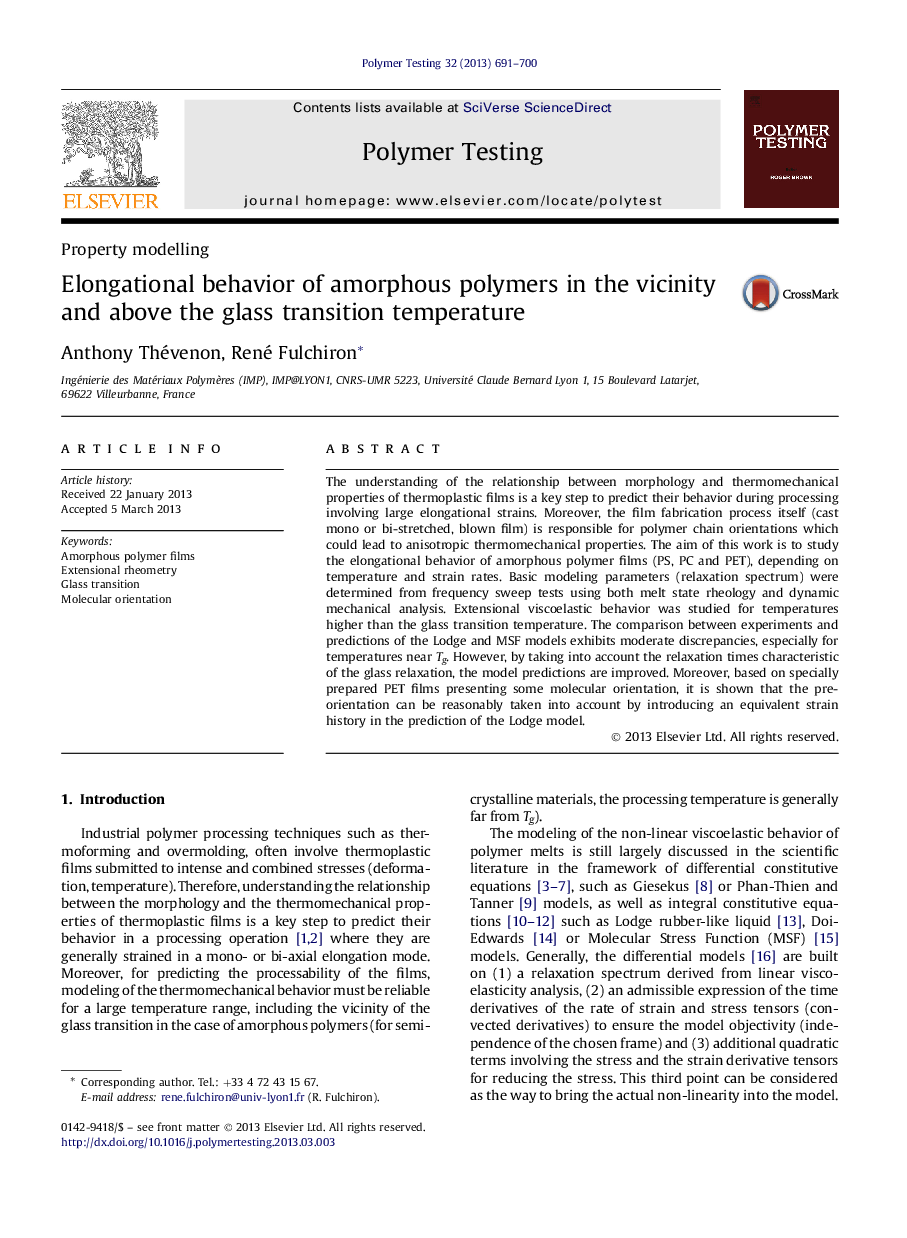| Article ID | Journal | Published Year | Pages | File Type |
|---|---|---|---|---|
| 5206516 | Polymer Testing | 2013 | 10 Pages |
The understanding of the relationship between morphology and thermomechanical properties of thermoplastic films is a key step to predict their behavior during processing involving large elongational strains. Moreover, the film fabrication process itself (cast mono or bi-stretched, blown film) is responsible for polymer chain orientations which could lead to anisotropic thermomechanical properties. The aim of this work is to study the elongational behavior of amorphous polymer films (PS, PC and PET), depending on temperature and strain rates. Basic modeling parameters (relaxation spectrum) were determined from frequency sweep tests using both melt state rheology and dynamic mechanical analysis. Extensional viscoelastic behavior was studied for temperatures higher than the glass transition temperature. The comparison between experiments and predictions of the Lodge and MSF models exhibits moderate discrepancies, especially for temperatures near Tg. However, by taking into account the relaxation times characteristic of the glass relaxation, the model predictions are improved. Moreover, based on specially prepared PET films presenting some molecular orientation, it is shown that the pre-orientation can be reasonably taken into account by introducing an equivalent strain history in the prediction of the Lodge model.
